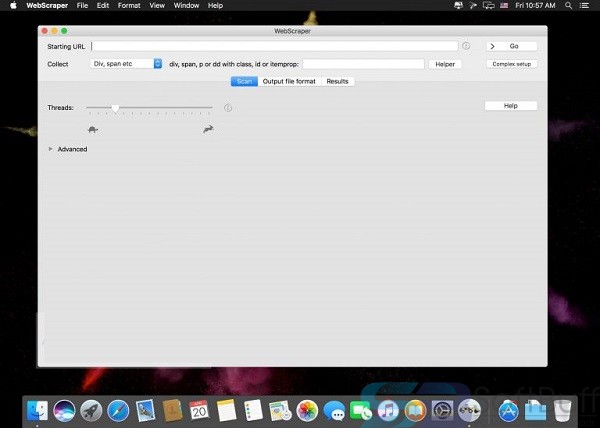
Indicates server name with which we're interacting. When scraping non-english websites we might need to adjust this value to appropriate language to avoid standing out from the crowd. Keep an eye on the q value which indicates language preference score in case there are multiple languages defined (eg fr-CH, fr q=0.9, en q=0.8, de q=0.7, * q=0.5). Indicates what language browser supports. Take note br value which indicates support for newer brotli encoding which is commonly used to identify web scrapers.

Indicates what sort of encoding HTTP client supports. Text/html,application/xhtml+xml,application/xml q=0.9,image/avif,image/webp,image/apng,*/* q=0.8,application/signed-exchange v=b3 q=0.9 Text/html,application/xhtml+xml,application/xml q=0.9,image/avif,image/webp,*/* q=0.8 We usually want to keep it as it is in common web browsers: # Firefox Indicates what type of data our HTTP client accepts. Next, let's take a look at these default headers, what do they mean and how can we replicate them in our web scraper. Since python dictionaries are ordered we can simply pass our header dictionary to our client, and they will be sent in this defined order. Print(httpx.get("", headers=HEADERS).text) "Accept": "text/html,application/xhtml+xml,application/xml q=0.9,image/avif,image/webp,*/* q=0.8",
#Swift webscraper windows
To avoid being detected because of unnatural header order we should ensure that used HTTP client respects header ordering, and order headers explicitly as they appear in a web browser.įor example, if we're using httpx in Python we can imitate Firefox on Windows headers and their ordering: import httpx Alternatively, httpx library does respect the header order, and we can safely use it for web scraping as a requests alternative. Primarily because many http clients in various programming languages implement their own header ordering - making identification of web scrapers very easy!įor example, most common http client library in Python - requests - does not respect header order (see issue 5814 for potential solutions), thus web scrapers based on it can be easily identified. The first we noticed in the previous section is that browsers return headers in certain order and this is an often overlooked web scraper identification method. As always, we don't want this fingerprint to stick out too much, so we should aim to replicate the most common platforms such as Chrome on Windows or Safari on MacOS.

Using this information we can build our header fingerprint profiles for our web scrapers.
#Swift webscraper mac os x
User-Agent: Mozilla/5.0 (Macintosh Intel Mac OS X 10_15_7) AppleWebKit/605.1.15 (KHTML, like Gecko) Version/15.0 Safari/605.1.15Ībove shows default headers and their order common web browsers send as a first request when establishing connection. User-Agent: Mozilla/5.0 (X11 Linux x86_64) AppleWebKit/537.36 (KHTML, like Gecko) Chrome/.74 Safari/537.36Īccept: text/html,application/xhtml+xml,application/xml q=0.9,image/avif,image/webp,image/apng,*/* q=0.8,application/signed-exchange v=b3 q=0.9 If we run this script and go to in our browser we'll see the exact http connection string our browser is sending: Chrome on Linux GET / HTTP/1.1 With socket.socket(socket.AF_INET, socket.SOCK_STREAM) as s: We can achieve this with a short python script: import socket To understand what browsers are sending we need a simple echo server that would print out HTTP connection details server is receiving. When web scraping we want our scraper to appear as a web browser, so firstly we should ensure that our scraper replicates common standard headers a web browser such as Chrome or Firefox is sending.


 0 kommentar(er)
0 kommentar(er)
